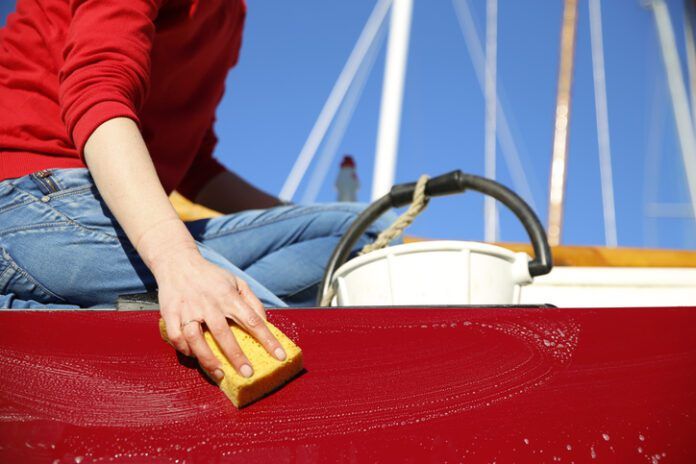Sails aren’t cheap, and it makes sense to maintain them just as you would maintain a diesel engine or a set of winches. Sails should be inspected, mended, and washed every year, either by you or a sailmaker – that depends on price, DIY expertise, and the amount of room you have for the project.
You can clean most sails yourself, but it’s a chore that can be cumbersome and time-consuming. Here are some best practices and cleaning and storage tips worth following.
With a few notable exceptions, modern sailcloth is impervious to all normally encountered chemicals. (This means they will not lose strength. They can still stain.) The exceptions:
- Kevlar and Nylon, which are both extremely sensitive to chlorine (bleach). Kevlar and Nylon sails should never be washed with any cleaner containing any amount of chlorine, or rinsed in a swimming pool.
- Laminated sails. The adhesive can be softened by acetone, MEK, and similar powerful solvents, as well as protracted immersion in petroleum-based chemicals like gasoline and diesel fuel.
Although ordinary Dacron (polyester) sails are not weakened by most chemicals, it is best to use the mildest cleaner that will get the job done. Remember that some threads used in stitching may be more vulnerable to strong chemicals than the actual sail material.
To help you determine which cleaning methods and products are best for your sails as well as other specialty products that are worth adding to your cleaning arsenal, Practical Sailor has put together a downloadable ebook entitled Specialty Marine Cleaners. In it, you’ll find information on maintenance products for tasks above the waterline, cleaning sails and ropes, degreasing, reviving inflatable dinghies and fenders, and those that will suit the eco-conscious sailor.
To read even more about the cleaning and maintenance of all your boating surfaces, buy the entire three-part series for the price of two! Available for purchase and download is Practical Sailor’s ebook series, Marine Cleaners. This three volume set contains the ebooks Gelcoat Restoration & Maintenance, Essential Marine Cleaners and Specialty Marine Cleaners.
It’s like getting one complete ebook FREE.









































